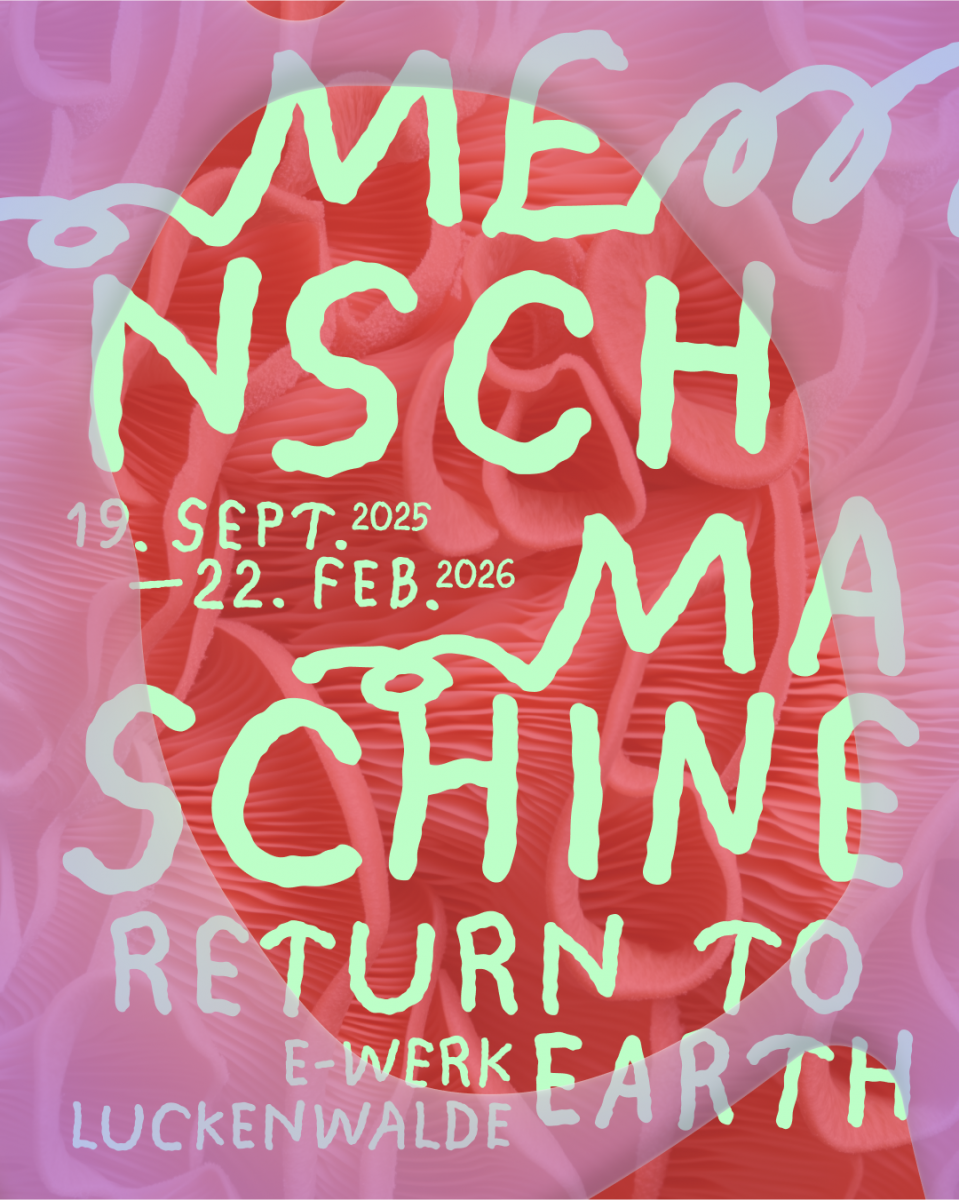
It is time to return to Earth. For billions of years, our Earth has systematically sustained life, pulsing with the technologies of ecologies that sustain hummingbirds, weeping willows, three-hearted octopuses, mycelial networks, and bioluminescence. But now, Earth is aching under the weight of extraction and neglect, unleashed across mere centuries of accelerating industry. It is time to return to Earth.
Our addiction to innovation, progress, and efficiency—to the techno-utopian promise of endless expansion—has depleted the planet’s life support systems. To return to Earth is to re-centre the Earth’s living systems as the foundation of our intelligence, rather than merely the ground to be mined for human ambition.
The exhibition Mensch Maschine: Return to Earth seeks to reactivate the climate conversation through dissonant material, symbolic, and cosmological encounters across different times, speculations, and origin stories. Eight artists and artist duos explore the cracks between worlds to meet our entangled planet: from automated, techno-animal wars to the intelligences of community, from ancestral wisdoms to ecological technologies. The exhibition redirects technologies of violence toward artistic expression, resisting singular hegemonic narratives while embracing multiple poetics of image-making and story-telling, from hybrid creatures to scattered landscapes.
Through active forms of retreat and resistance, can we begin to gather radical positions, tones that move toward symbiotic systems, where ecology and technology are approached as interwoven, living communities rather than separate disciplines? The question is not how to hope, but how to come together in shared intellectual joy, sitting with complexity while embracing empathy and play.
Artistic Positions
E-WERK Luckenwalde, JUNGE AKADEMIE Akademie der Künste and E.ON Foundation are pleased to present the group exhibition of Mensch Maschine fellows 2024–2025 at E-WERK featuring Assem Hendawi, Emerson Culurgioni & Viktor Brim, hn. lyonga & Safiya Yon, Kira Xonorika, Maithu Bùi, Rae Hsu and Sonya Isupova.
Mensch Maschine: Return to Earth presents eight artists and artist duos who have developed projects responding to the complex relationships between human and machine, animal, plant, and planet amid climate emergency and advancing digital technologies like artificial intelligence. The programme's fellows bring together diverse cultural and geographical contexts, aesthetics, and knowledge systems. At a time when the world approaches ecological tipping points, global wars, and ongoing threats to democracy, Mensch Maschine opens a pluriversal and speculative space for envisioning alternative approaches from within the arts.
Artists may not change the world—a burden too often, and unfairly, placed upon them—but they can offer new imaginaries, ancient wisdoms, ruptures, constellations, and experiences that help us navigate the tangled relationships between human, machine, animal, plant, and planet.
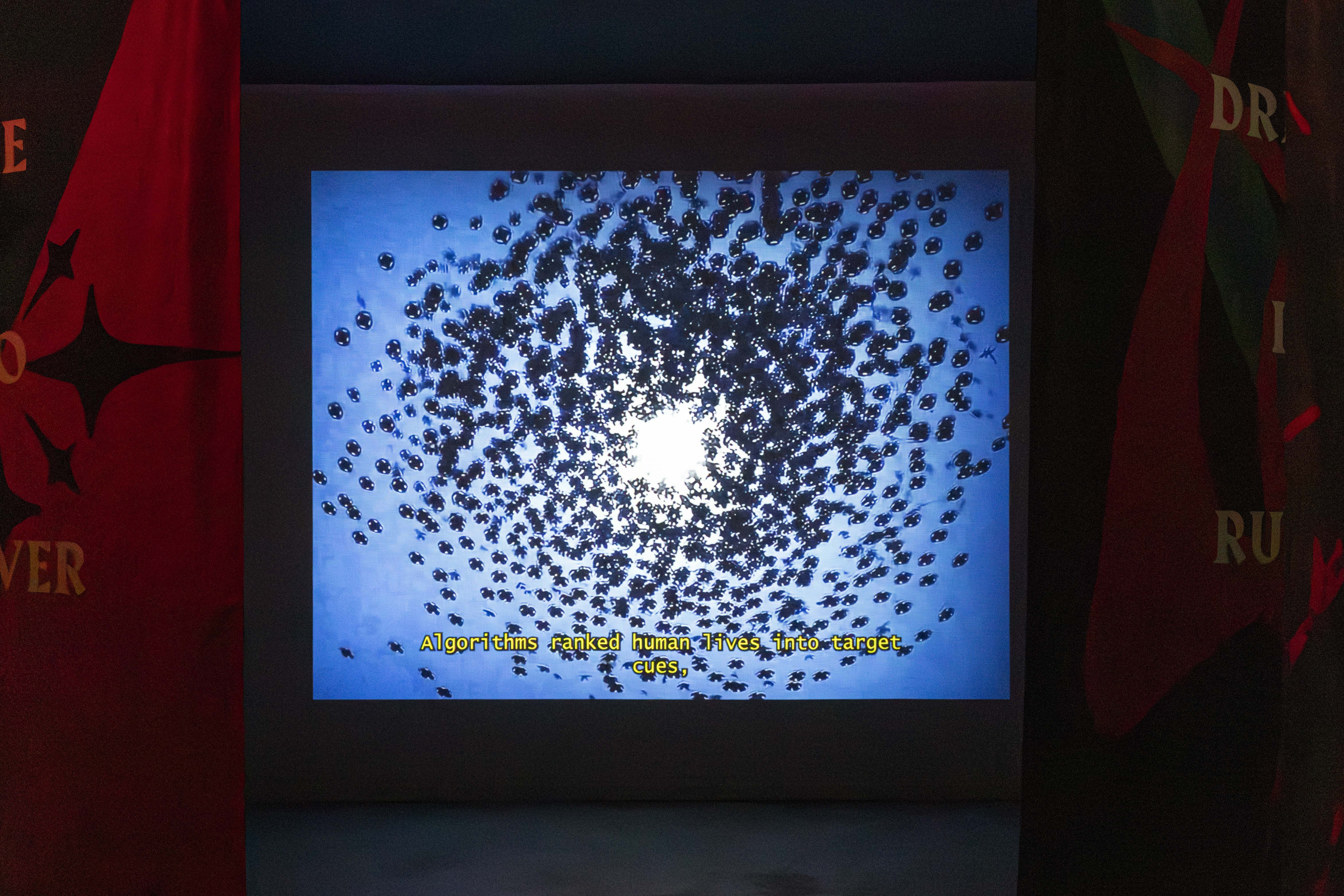
Assem Hendawi
BARIQ: The Invocation of what comes after refusal
Gallery Three
Assem Hendawi's work explores how technology shapes subjectivity and social structures, particularly within the context of late capitalism. His films Everything Under Heaven and SIMIA: Stratagem for Undestining examine the rewriting of narratives and identities through technological evolution, questioning how power operates through digital systems. His recent practice has turned toward artificial intelligence as both subject and collaborator. His new multimedia installation is set in a future coastal city of the global South where an artificial intelligence named B.A.R.I.Q. emerges from the city's flooded infrastructure. Through B.A.R.I.Q.'s awakening, the work explores how intelligence might develop different values when freed from existing power structures. The installation asks what forms of consciousness could emerge from sites of abandonment and resistance, reimagining AI as a force for decolonial transformation rather than military and corporate control. Hendawi's creative process involves extended collaboration with AI systems, engaging in iterative dialogue to co-develop conceptual frameworks and aesthetic languages. This human-machine partnership shapes the work's distinctive visual and narrative approaches, positioning artificial intelligence as creative collaborator rather than production tool.
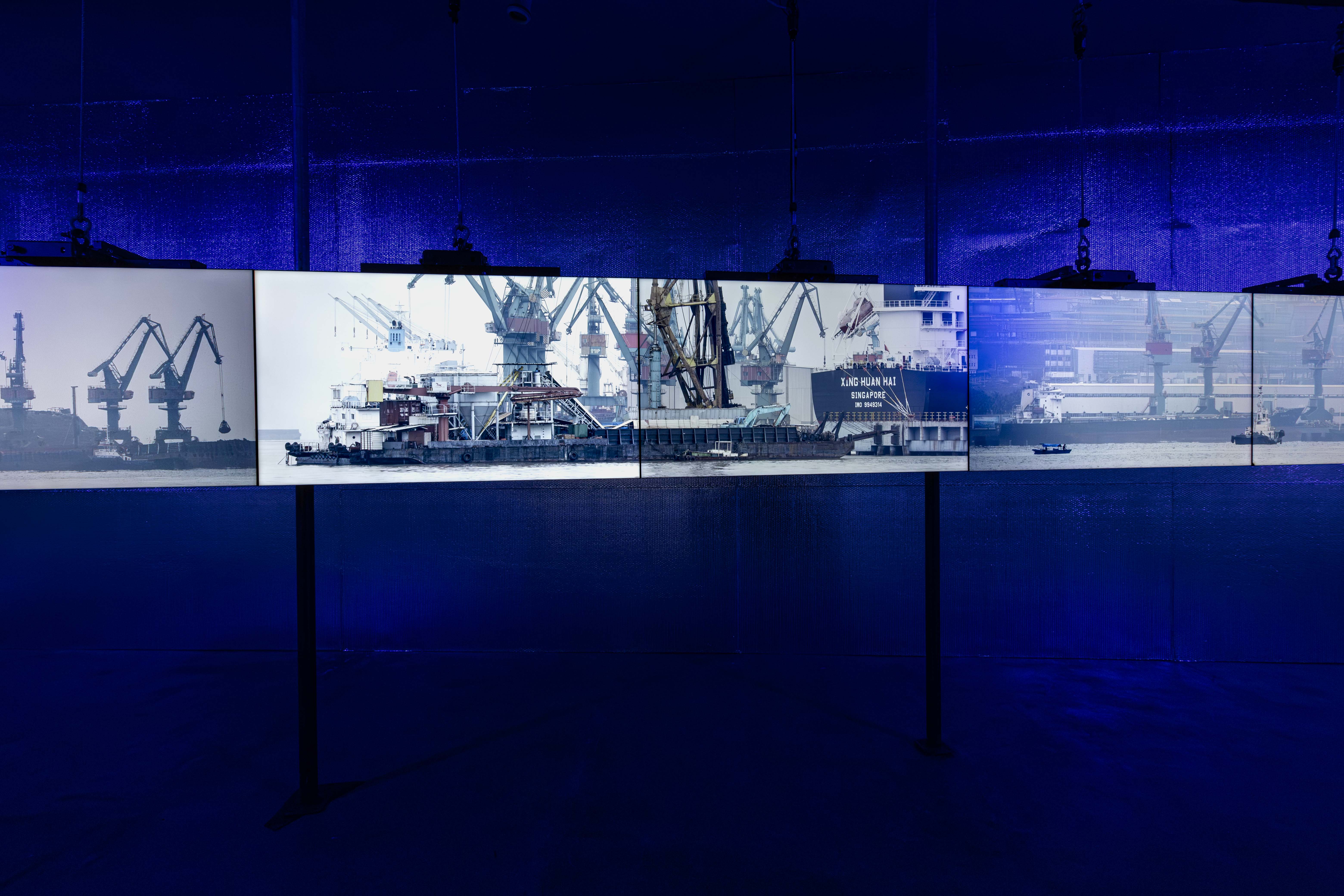
Configuration Drift interrogates the material substrates of contemporary technological regimes through fieldwork in Indonesia, Malaysia and Singapore. The project traces how nickel extraction for Western/Chinese renewable energy markets and datacenter infrastructures serving the same powers constitute parallel forms of resource capture. As Singapore's constraints displace computational capacity to Johor's 33MW facilities, a recursive pattern emerges: both green transition minerals and cloud computing architectures extract Southeast Asian resources while serving distant technological imperatives. Our investigation reveals landscapes where extractive logics perpetually reframe themselves—nickel mining as agricultural precursor, palm-oil waste as smelter fuel, radioactive byproducts as fertilizer. Through drone technology deployed as scanning apparatus and artistic instrument, we examine how automated perception systems parse territorial value. Our evolving visual archive—incorporating union testimonies and environmental documentation—privileges operational over affective representation. These silent infrastructures, machinery, and logistics networks emerge as primary actors structuring asymmetrical technological futures, where Western/Chinese progress materializes through systematic ecological transformation elsewhere.
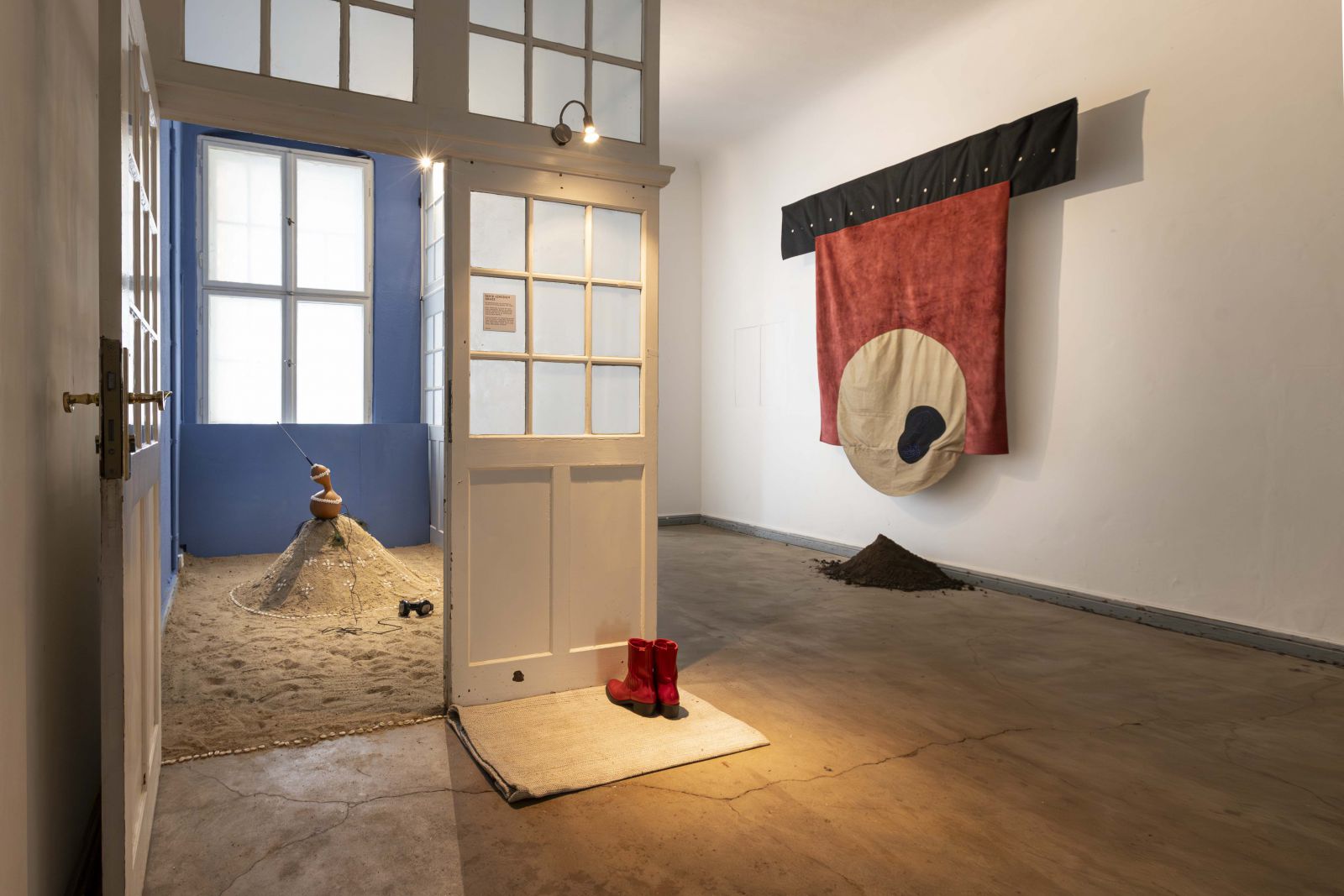
hn. lyonga and Safiya Yon
With contributions from Cate Lartey and David Osaodion Odiase
Returning
Ancestral Memory Lab: Technologies of Black Speculative Returning
Gallery Three, Glass House and E-WERK Entrance
To us, technology and “human Sciences remain deeply complicit with the regimes of knowledge, power and practice that subtend and produce the material effects and condition of unfreedom. The radical move would be for the contemporary Human Sciences to produce the necessary sustenance required to both undo the chimera effects of democracy and freedom and instead point us towards a new perspective, one in which grappling with Black being might yet produce the routes, intellectual and otherwise, for a freedom yet to come.” — Rinaldo Walcott, in a conversation titled; Idle No More and Black Lives Matter: An Exchange with Leanne Simpson and Glen Coulthard.
"We must imagine a Black world so as to surpass the everywhere and everyway of Black death, of Blackness that is understood only through such a vocabulary." — Kevin Quashie, Black Aliveness, Or a Poetics of Being
Ancestral Memory Lab is a living archive, conceived by artists hn. lyonga and Safiya Yon. It is a space for remembrance, healing, and speculative imagination that centers Indigenous African technologies. It posits the Lukasa Memory Boards of the Luba People of Congo as a blueprint for trans-digital and intergenerational archives. These archives are not static but dynamic, cosmic portals that encode Black epistemologies and ancestral wisdoms. Rooted in a critique of colonial techno-scientific legacies, the Lab envisions a freedom not yet realized, honoring the DR of Congo, Cameroon, Nigeria, South Africa, Angola, and Ghana as sacred birthplaces of technology, and offering a radically anti-colonial, anti-capitalist framework to reclaim Indigenous knowledge systems as we dream and work towards liberated futures.
Through sacred practices like Gleaning, deep listening, breathwork, movement, and ritual use of the senses, it reframes memory as an embodied, multisensory phenomenon felt, heard, touched, and intuited. Drawing from Pan-Afrikan traditions, Afro-diasporic scholarship, and Black Feminist thought, it challenges colonial definitions of technology and archives, offering instead Technologies of Black Speculative Returning. These are sensual, spiritual, and ancestral tools of survival pending revolution and imagination, grounded not only in data but in the body, spirit, and collective memory.
Within the exhibition, this ethos comes alive in the works of hn. lyonga and Safiya Yon, and of the invited collaborating artists Cate Lartey and David Odiase. From lyonga’s weeping willow that stands or sits still at the threshold of E-WERK and a hovering board, to Yon’s textile maps inspired by her maternal grandmother’s dream visits, holding memory pathways of embroidered cotton and beads, to Lartey’s AI video revival of her grandmother, David Odiase’s sonic altar, and Carlos Carima‘s paintings based on ancestral photo archives, each element becomes a vessel of reverence and recall. The Lab resists algorithmic erasure and Western-centric innovation, offering a cartography of diasporic becoming. It is more than an installation. It is a space that exists within the “meanwhile” of Black life. A place between mourning and possibility, between rupture and continuity. It is a vessel, a (Space)ship. A frequency, a call. It is a contribution to the long project of building a world where the lives, memories, and futures of Black people are not just preserved or considered marginal but honored, lived, loved fully and fiercely.
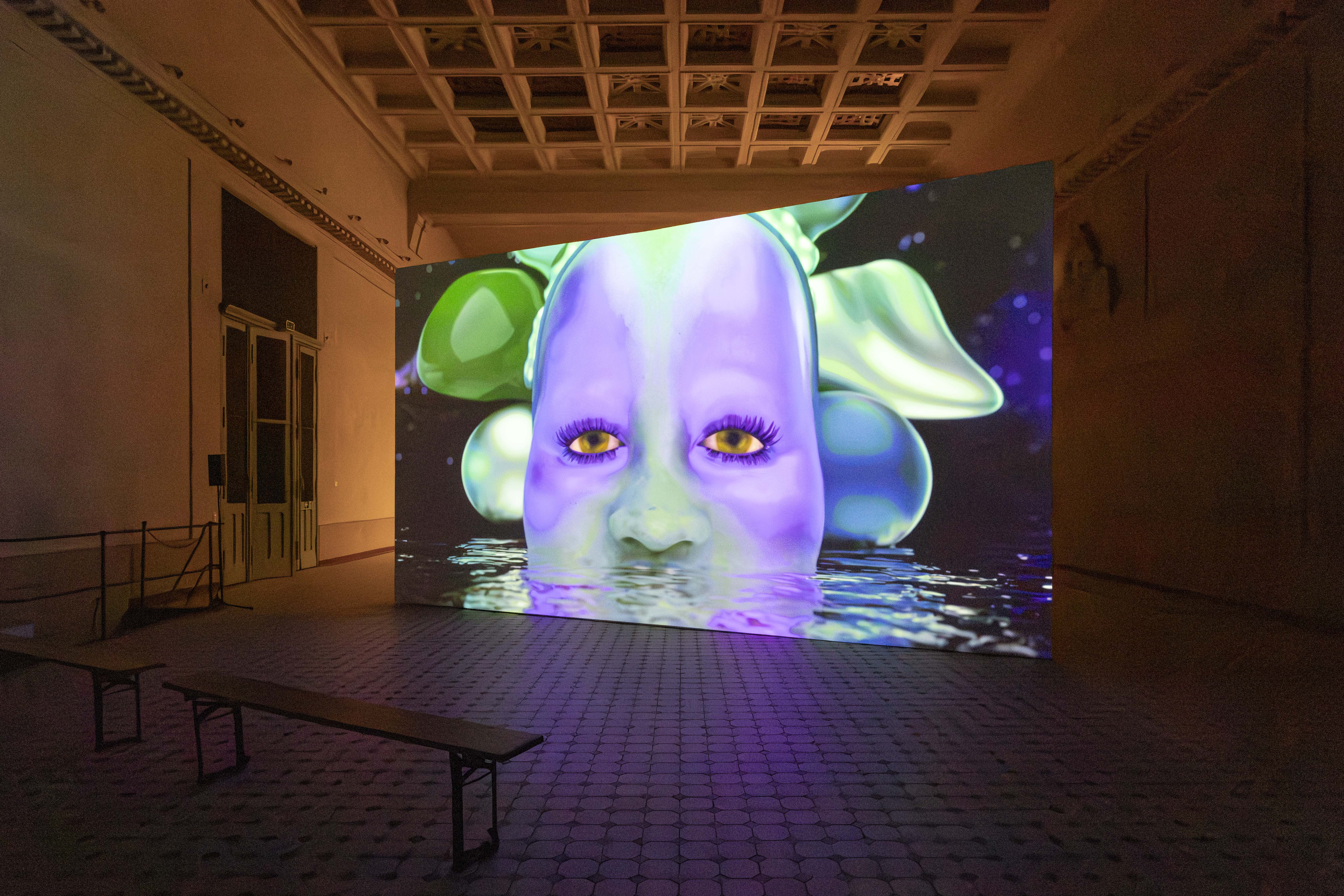
Kira Xonorika
Deep Time Dance
Turbine Hall
During her three-month Mensch Maschine residency, Kira Xonorika expanded on her film Deep Time Dance, which explores macrocosmic connections, speculative terraformation, technoscience and sovereignty. The film starts with a Guarani prophecy of the Jeguakava Clan, but soon this semantic text morphs and shifts into a rhythmic, dance-like poetic. Present is the slippery uncanniness that we recognise in AI, however this is layered with elements of unquestionable humanness.
The Sediment installation included textile banners featuring AI-generated imagery developed through Kira’s research using ethically trained datasets. Incorporating digital collage techniques, these works reimagine ancestral cultural archives within eco-futurist and regenerative landscapes.
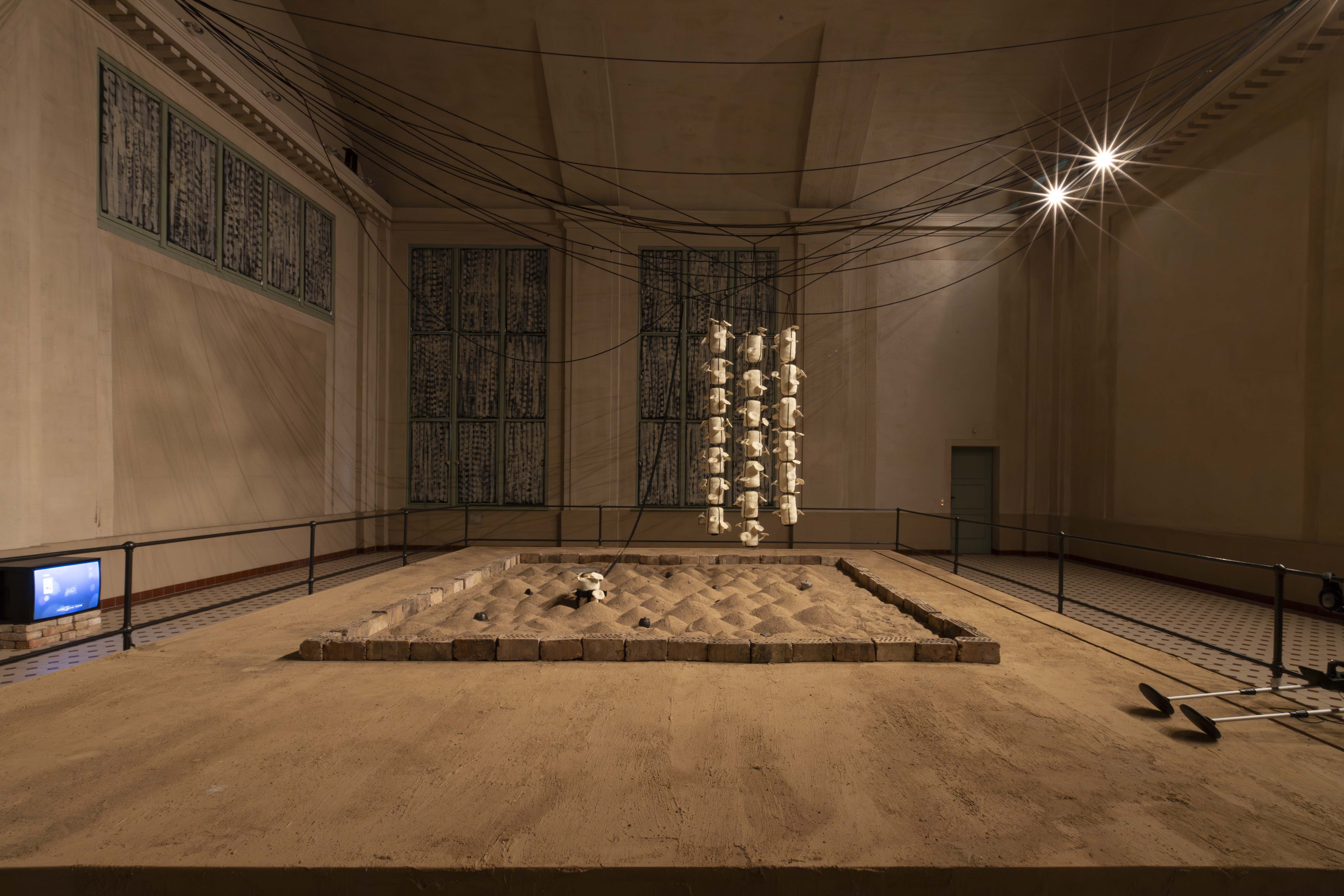
Maithu Bùi
Operation Remediation
Turbine Hall
Operation Remediation examines the migration of technological innovations and their impact on ecosystems, with an emphasis on renegotiating the boundaries of the humanoid. Informed by Maithu Bùi’s personal history, the work addresses the enduring legacies of war and the entanglement of technological systems with structures of exploitation. The project focuses on the instrumentalization of biological agents in the detection and disposal of explosives—for example, giant pouched rats, honeybees, or genetically modified E. coli—often in conjunction with sensor technologies within complex environmental conditions. In Vietnam, for instance, war-related pollutants are reactivated by seasonal flooding and erosion intensified by climate change. As Leah Zani suggests, former battlefields may be understood as “bomb ecologies.”[*] Operation Remediation questions who is protected within these techno-ecological systems — and who is not. What if only privileged children, equipped with biosensor-enabled suits, could play safely on contaminated playgrounds?
[*] Zani, Leah. 2018. Bomb Ecologies
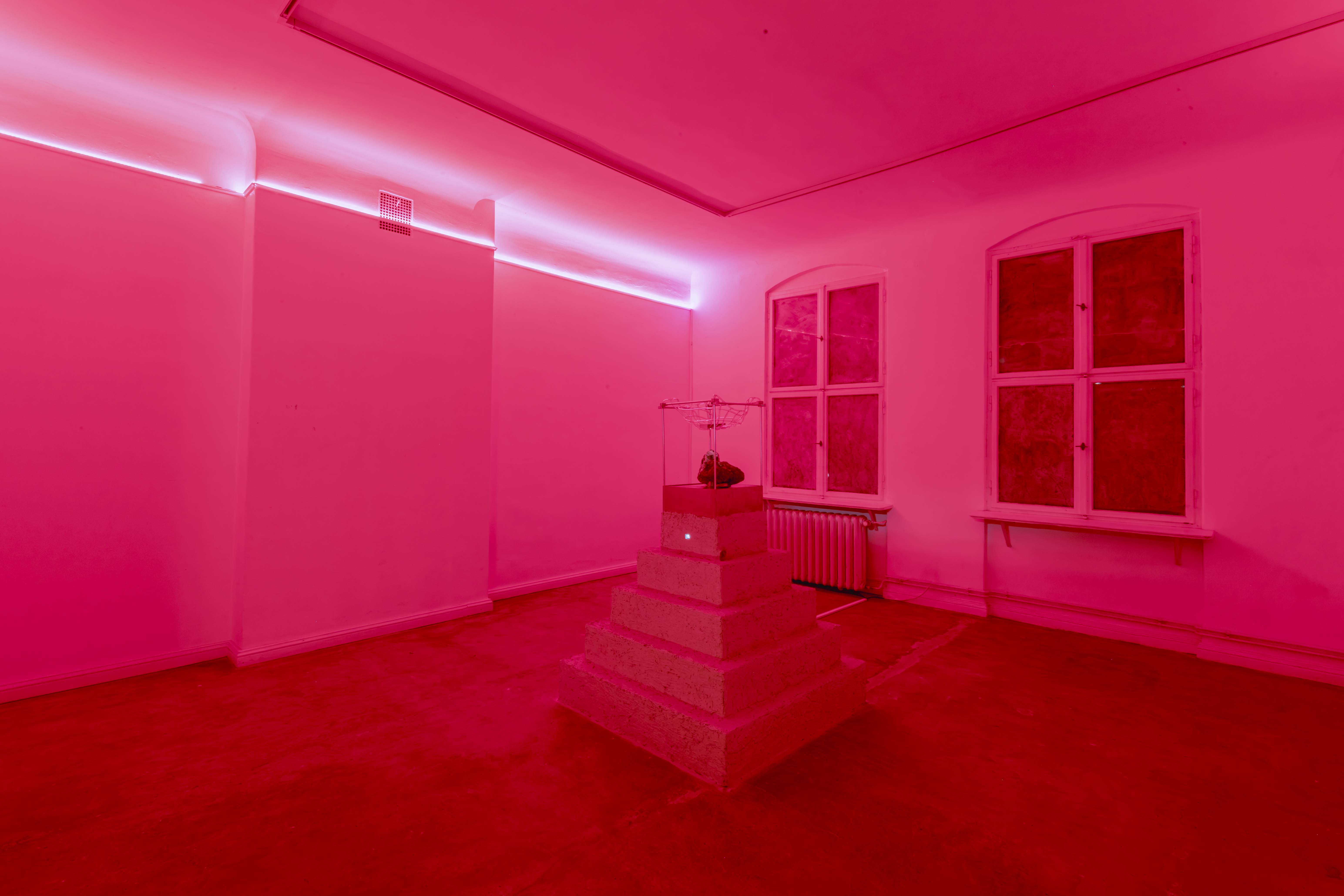
Rae Hsu
Water Remembers What Capital Forgets (water does not speak, it spills)
Gallery Two
This installation juxtaposes ancient weaving technology with financial and computational infrastructures. Instead of fibers, the warp and weft of this weave is a continuous stream of water. A microcontroller ties the flow of water to real-time volatility in NVIDIA’s stock price, binding ancient craft to today’s markets and the company that stands in for its dominance in the global AI thirst. Overhead, a generative soundscape co-written with The Empathy Machine, a language model trained to privilege difference over sameness, meditates on notions around liquidity, computation, empathy, and wealth. AI is a function of liquidity: capital, computation, and water. Financial speculation feeds AI's expansion, while fresh water cools server farms and ultrapure water cleans silicon wafers. With the spilling of water, what stories leak when the abstractions of profit meet the material cost of thirst?
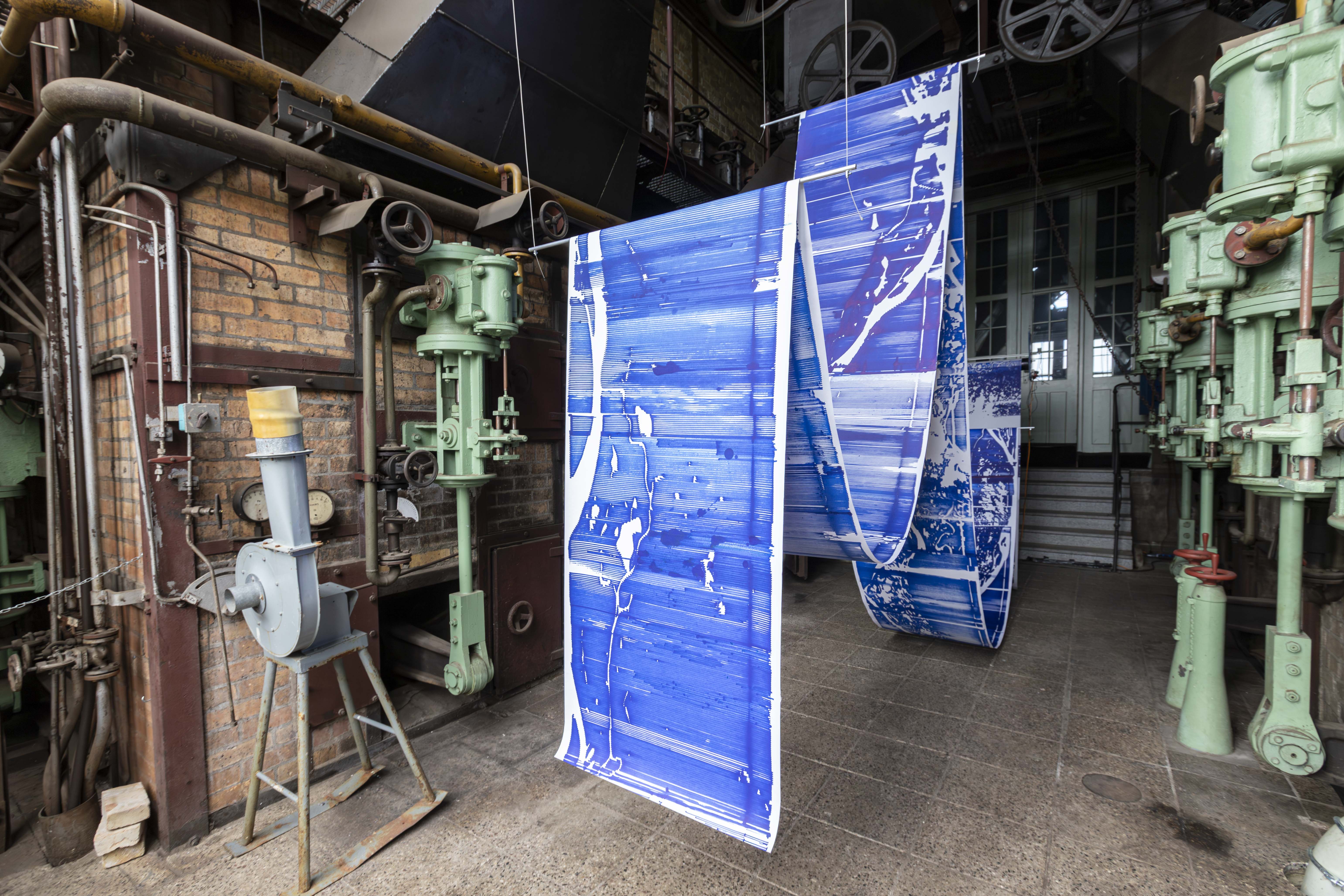
Infrastructure is often invisible until it fails, as tragically demonstrated on 6 June 2023, when the destruction of the Kakhovka Dam caused immense human suffering and became a major environmental disaster with far-reaching consequences.
This project explores the ecological repercussions of the ongoing war in Ukraine, focusing particularly on the heavily affected southern regions and the aftermath of the Kakhovka Dam’s destruction. The installation examines the relationship between humans and machines, the mapmaker and the map, and the challenges faced by remote-sensing infrastructures. It also questions the processes of mapping itself, as a way of sensing the daily changes occurring in the landscape during wartime.
For this work, Sonya Isupova built a metaphorical satellite, a self-constructed machine that hovers above the land, mapping data with limited accuracy and transforming satellite images into maps. Using NDWI (Normalized Difference Water Index) data, which monitors water content in vegetation and open water bodies, she charts the Dnypro River’s altered course after the dam’s destruction. With the dam gone, the river has returned to its original bed. The map unfurls like the river itself, revealing swirls, rapids, channels, and spurs piece by piece. Imperfect and incomplete, the map embodies the inherent inaccuracies of all mapping — the only certainty is that the roll keeps turning, and the river keeps emerging.
For the exhibition at E-WERK Luckenwalde, Isupova constructed a new vertical drawing machine, transforming the way the maps are presented. Instead of lying flat, the maps cascade downward to the floor as they are generated in real time, allowing audiences to witness mapping as it happens, emphasizing both the fluidity of the landscape and the continuous production of knowledge.
Credits
Scientific collaborators: Anatolii Chernov PhD, Sofia Hordiichuk
Technical assistance: David Heritier, Frédéric Butor-Blamont
With support from: HEAD Geneva, Kyiv Emergency Art Platform

The Mensch Maschine project is supported by the E.ON Stiftung, the Festival Funding Programme of Initiative Musik with project funds from the Federal Government Commissioner for Culture and the Media, in recognition of its ecological sustainability measures, innovative musical programming, and commitment to supporting regional structures. With the kind support of Bildungs‑, Jugend‑, Kultur‑ und Sportstiftung Teltow‑Fläming der Mittelbrandenburgischen Sparkasse in Potsdam and RUẞ Ingenieure AG with generous support from production partners the Präsenzstellen der Hochschulen des Landes Brandenburg, ReBeam - Green-AV specialists and Berlin Projectors and Künstlerhaus Bethanien.
The programme is curated by Clara Hermann, Director of the JUNGE AKADEMIE, Akademie der Künste; Helen Turner, Co-Director and Chief Curator at E-WERK Luckenwalde; and Katharina Worf, Freelance Senior Curator at E-WERK Luckenwalde, and is a partnership between E-WERK Luckenwalde, JUNGE AKADEMIE of Akademie der Künste and the E.ON Foundation.E-WERK collaborators are made up of an international group of freelance cultural professionals on a project-by-project basis
Helen Turner
Co-director and Chief Curator at E-WERK Luckenwalde
Katharina Worf
Freelance Senior Curator at E-WERK Luckenwalde
Clara Hermann
Director of the JUNGE AKADEMIE at Akademie der Künste
Marie Graftieaux
JUNGE AKADEMIE at Akademie der Künste
Nicola Jeffs
PR & Marketing
Florine Lindner
Programme & Kunststrom Producer
Carolin Kralapp
Communications Manager
Laila Kaletta
Programme Assistant
Miriam Bethmann
Bookkeeper
Niels Boogers
Curatorial Intern
Chloe Kelly
Curatorial Intern
Marius Alsleben
Install Team
Cian McConn
Install Team
Mila Panic
Install Team
Maite Amaya Ruiz Marcos
Install Team
Jann Petersen
Install Team
Matt Welch
Install Team, Technician
Matteo Ciprandi
Install Team, Carpenter
Marc Bubser
Install Team
Arevik Manukyan-Bubser
Housekeeping and Catering